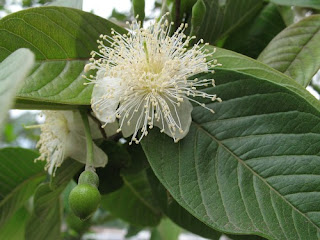
How to Grow Guava Tree
Climatic Requirements: Ideally guava trees require warm climate to grow. They normally are found in countries with hot summers and cool winters. Vegetation and fruits grow in abundance if the temperature is in between 15°C and 28°C. The flowers come out in 3 to 6 months and bear fruits. During this fruit bearing stage, if the temperature falls below 15°C, the quality of fruit suffers. The tree is well adapted to both summer and winter temperatures. They can also survive in droughts very well and grow best in areas which receive almost 1000 to 1500 mm of rainfall. If the rain is sparse, trees should be watered during the dry period, especially if there are fruits.
Soil Required: Basically all types of soil suit the growth of a guava tree. The trees are normally found near streams, brooks and rivers. They survive in these areas despite the excessive water logging and poor soil conditions. If you want a well-grown guava tree, you should plant it in well-drained soils. They can also be grown in soils which are not suitable for many other plants.
Soil Preparation: Before planting a new guava plant, examine the soil carefully with respect to its depth, drainage and compacted layers. The ideal depth of the soil to plant a guava tree should be 800 mm.
Planting the Guava Tree: The recommended planting distance is 2 m between each tree in a row. If you want your guava tree to always remain healthy and productive make sure it is not planted too close to each other. If you are planting thes trees on a large-scale make sure that the space between them must be enough to pass tractors, spraying machines and laborers.
Pruning Guava Trees
- You can start pruning young guava plants when they are only 3 to 4 months old. Always prune grown guava trees after summer when they have borne fruits.
- Take out all the ground root suckers and dead wood which gets accumulated on the tree. Skirt infected branches will stop the fruiting of this tree and can also cause harm to the tree.
- Always prune a guava tree in a judicious manner. Make a cut above the lateral branch, take care that you don't chop of branches which are bearing new flowers.
- Avoid pruning any dead parts of the tree which may have died due to weather conditions. You can remove the dead branches at any time.
- Pruning with dirty or dull tools may cause a long term damage to the tree. Always make sure that your cutting tools are clean and sanitized before you prune any tree or plant.
- Guavas are climatic fruits. They can be picked green and will still ripen in storage and shipping. Always place it in a sunny location away from other trees. Make sure the soil is free from flooding and it drains well after rainfall.
- Don't allow any tree or grass to grow around the tree's location as it will interfere with the guava tree's growing process.
- Enrich the tree four to six times a year using a good quality fertilizer. You can also use nutritional sprays which contain zinc, manganese, boron and iron.
- Water the guava tree every alternate day in the first week. Never water the tree during the rainy seasons.
- Always keep an open eye for the Caribbean fruit fly, the guava moth, the red banded thrip and the guava white fly.
- Covering the fruit with a paper bag has also proved useful in preventing insect infestation. If you want professional help, get in touch with the local Agricultural Organization.
No comments:
Post a Comment